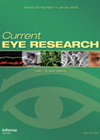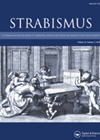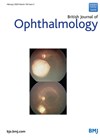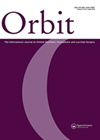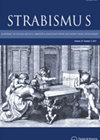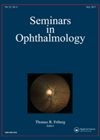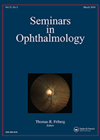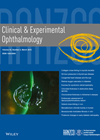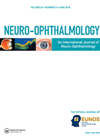
Journal Reviews
Bromfenac versus betamethasone in diabetic macular oedema
This is a randomised, prospective, single-centre trial in patients diagnosed with diabetic macular oedema (DMO) with central subfield thickness (CST) of 250-500µm, who refused anti-VEGF treatment. Nineteen eyes of 19 patients were randomised to bromfenac (BF) or betamethasone (BM) drops,...
OCT findings after strabismus surgery for macular, choroidal and nerve fibre thickness
This study used OCT to investigate the changes in the central macular thickness, subfoveal choroidal thickness (SFCT) and retinal nerve fibre layer (RNFL) after horizontal rectus surgery for patients with strabismus. This was a retrospective study and patients were grouped...
Retinal changes prior to hydroxychloroquine toxicity
In this retrospective longitudinal study, the authors examined changes in retinal layer thickness in patients taking hydroxychloroquine without evidence of retinopathy. Patients were drawn from a hydroxychloroquine screening clinic and required at least two OCT scans, at least one year...
Comparison of changes in ECD and CCT between CPS and FLACS
This is an intraindividual randomised clinical trial of 134 eyes from 67 patients, one eye was treated with femtosecond laser-assisted cataract surgery (FLACS) (including pretreatment of main incision, side port, capsulotomy and lens fragmentation) and the fellow eye received conventional...
Endoscopic assisted probing for congenital nasolacrimal duct obstruction
In this retrospective study authors compare the success rate of nasal endoscopic-assisted probing between younger (three years and below) and older (three years and above) children with membranous nasolacrimal duct obstruction and its correlation with the thickness of the membrane...
Choroidal thickness in strabismus and amblyopia
The authors examined the effect of exotropia, esotropia, anisometropic amblyopia and hypermetropia on choroidal thickness in a prospective cross section study. The study included 100 patients and 20 controls with a mean age of 8.5±2.9 years; 61 female and 59...
Steroid implants in the treatment of post-epiretinal membrane peel macular oedema
This is a retrospective review of 39 eyes of 37 patients treated with Ozurdex® (intravitreal dexamethasone implant) for persistent post-operative cystoid macular oedema (CMO) following vitrectomy and idiopathic epiretinal membrane (ERM) peeling. The 0.7mg implant was injected in each eye...
Biomechanical stabilisation of ocular measurements post cataract surgery
This prospective study looks into the time duration of biomechanical stabilisation post uneventful cataract surgery in a case series of 62 consecutive eyes in patients with no ocular or systemic comorbidity. The patients were followed-up at fixed intervals of one...
Using OCT to screen and monitor Alzheimer’s disease
Alzheimer’s disease (AD) is a neurodegenerative illness characterised by progressive decline in cognitive function. AD is the main cause of dementia worldwide. Over recent years researchers have strived to find biomarkers to diagnose AD, particularly in the early stages of...
Comparison of methods of central corneal thickness measurement in glaucoma
This prospective study was done to compare the accuracy and reproducibility of central corneal thickness measured by hand-held and disc-mounted ultrasound pachymeter in glaucoma patients. Sixty-five patients were included in the study. Patients with corneal diseases, corneal astigmatism >3 diopters...
Choroidal and RNFL thickness in patients with OSAS
In obstructive sleep apnoea syndrome (OSAS), hypoxia secondary to repetitive apnoeic episodes leads to blood pressure variations and haemodynamic changes. There is also intermittent activation of the sympathetic system when the patient is aroused from sleep during apnoeic episodes. OSAS...
Structural effects of migraine on the retina
Migraine is a common, chronic, multifactorial neuro-vascular disorder typically characterised by recurrent attacks of disabling headache and autonomic nervous system dysfunction (migraine without aura). Up to one third of patients also have neurological aura symptoms (migraine with aura). The objective...

